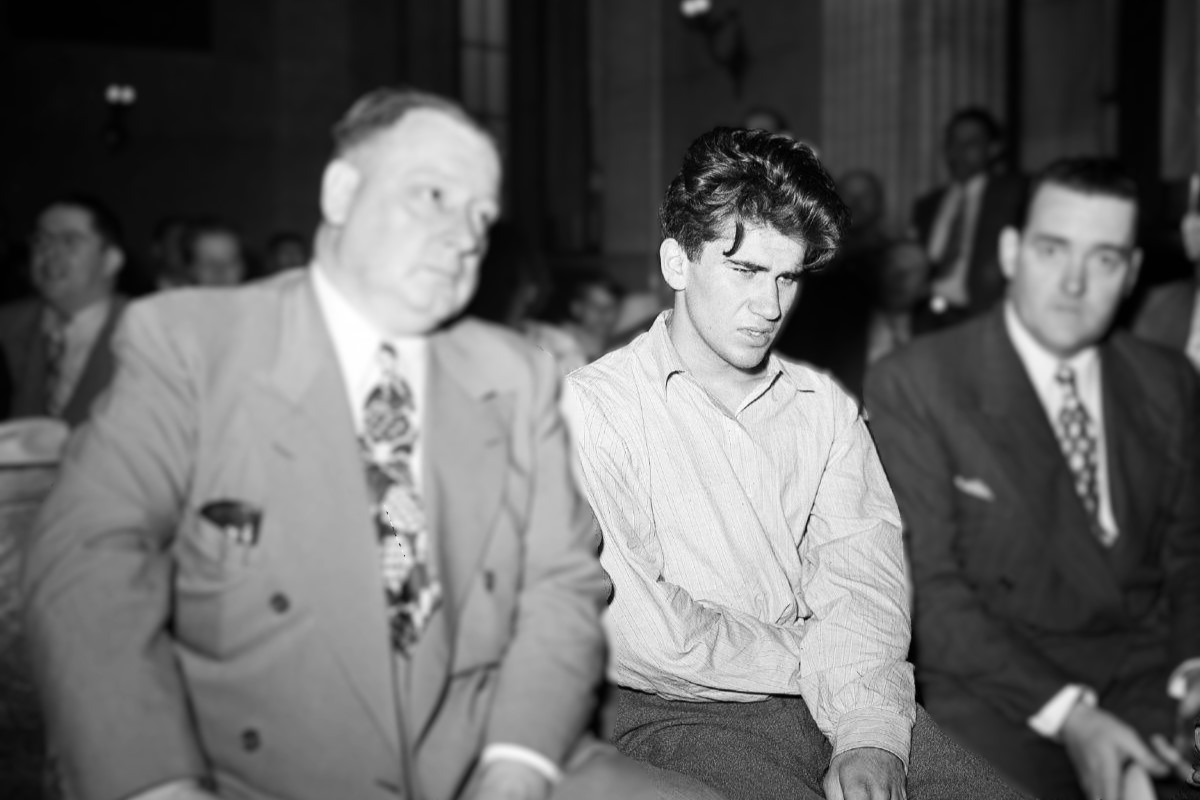
Who was William Heirens? Known as the "Lipstick Killer," William Heirens was an American criminal convicted of three murders in the 1940s. His case remains one of the most controversial in U.S. history. Heirens was arrested at 17 and spent the rest of his life in prison, maintaining his innocence until his death. The nickname "Lipstick Killer" came from a message scrawled in lipstick at one of the crime scenes. This case involved complex forensic evidence and intense media scrutiny. Heirens' story raises questions about justice, mental health, and the criminal justice system. Let's dive into 35 intriguing facts about this infamous figure.
Key Takeaways:
- William Heirens, also known as the "Lipstick Killer," committed heinous crimes in the 1940s, leaving a chilling message at the crime scenes. His case continues to intrigue criminologists and legal experts, sparking debates about justice and criminal behavior.
- Despite spending 65 years in prison, William Heirens maintained his innocence and engaged in various activities, including earning a bachelor's degree and helping other inmates with legal issues. His story reflects the complexities of the criminal justice system.
Early Life of William Heirens
William Heirens, also known as the "Lipstick Killer," was a notorious figure in American criminal history. His early life and background provide a glimpse into the making of a criminal mind.
- William George Heirens was born on November 15, 1928, in Evanston, Illinois.
- He grew up during the Great Depression, which significantly impacted his family’s financial stability.
- Heirens was known to be a bright student, often excelling in his studies.
- Despite his academic prowess, he began engaging in petty theft at a young age.
- His first arrest occurred when he was just 13 years old for burglary.
The Crimes of William Heirens
Heirens' criminal activities escalated over time, leading to a series of heinous crimes that shocked the nation.
- Heirens was linked to three brutal murders in Chicago between 1945 and 1946.
- The first victim was Josephine Ross, who was found dead in her apartment in June 1945.
- Frances Brown was the second victim, discovered in December 1945 with a message written in lipstick on her wall.
- The third and most infamous murder was that of six-year-old Suzanne Degnan in January 1946.
- Heirens was arrested in June 1946 after a failed burglary attempt.
The Lipstick Killer
The moniker "Lipstick Killer" became synonymous with Heirens due to a chilling message left at one of the crime scenes.
- The message at Frances Brown’s apartment read, "For heaven's sake catch me before I kill more. I cannot control myself."
- This message was written in lipstick, leading to the nickname "Lipstick Killer."
- The media sensationalized the case, further embedding the nickname in public consciousness.
- Heirens initially denied any involvement in the murders.
- He later confessed to the crimes, although there were claims that his confession was coerced.
Trial and Imprisonment
Heirens' trial and subsequent imprisonment were highly publicized events, drawing significant attention from the media and the public.
- Heirens was charged with three counts of murder, among other charges.
- He pled guilty to avoid the death penalty, resulting in three life sentences.
- His trial was one of the first to use polygraph tests and psychiatric evaluations.
- Heirens spent the rest of his life in prison, maintaining his innocence for many years.
- He was incarcerated at Statesville Correctional Center and later at Dixon Correctional Center.
Controversies and Doubts
Over the years, many have questioned the validity of Heirens' conviction, citing various inconsistencies and potential misconduct.
- Some experts believe that the evidence against Heirens was circumstantial.
- There were allegations of police brutality and coercion during his interrogation.
- Advances in forensic science have led some to question the original findings.
- Heirens himself claimed that his confession was the result of torture and threats.
- Despite numerous appeals, his conviction was never overturned.
Life in Prison
Heirens' life behind bars was marked by various activities and interactions that painted a complex picture of the man.
- Heirens became an avid reader and educated himself extensively while in prison.
- He earned a bachelor's degree from Southern Illinois University.
- He was involved in various prison programs and initiatives.
- Heirens was known to help other inmates with their legal issues.
- He maintained a relatively clean record during his incarceration.
Death and Legacy
William Heirens' death marked the end of a long and controversial chapter in American criminal history.
- Heirens died on March 5, 2012, at the age of 83.
- His death was due to complications from diabetes.
- He spent 65 years in prison, making him one of the longest-serving inmates in Illinois history.
- The case of the "Lipstick Killer" remains a topic of debate and intrigue.
- Heirens' story continues to be studied by criminologists and legal experts, reflecting on the complexities of justice and criminal behavior.
The Final Note on William Heirens
William Heirens, known as the "Lipstick Killer," left a chilling mark on history. His crimes in the 1940s shocked Chicago and the nation. Heirens' case remains controversial due to questions about his guilt and the methods used to obtain his confession. Despite spending over six decades in prison, he maintained his innocence until his death in 2012. The story of Heirens serves as a grim reminder of the complexities within the criminal justice system. It also highlights the importance of due process and the potential for wrongful convictions. Whether viewed as a cold-blooded killer or a victim of circumstance, Heirens' life and crimes continue to fascinate and horrify. Understanding his case offers valuable insights into the darker aspects of human nature and the justice system.
Frequently Asked Questions
Was this page helpful?
Our commitment to delivering trustworthy and engaging content is at the heart of what we do. Each fact on our site is contributed by real users like you, bringing a wealth of diverse insights and information. To ensure the highest standards of accuracy and reliability, our dedicated editors meticulously review each submission. This process guarantees that the facts we share are not only fascinating but also credible. Trust in our commitment to quality and authenticity as you explore and learn with us.


